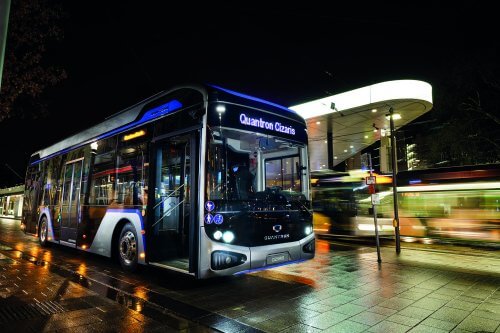
Jonathan Welch attended the recent online launch of German manufacturer Quantron’s Cizaris 12m electric single-decker
or many years, the bus market was a relatively stable and predictable one. In the UK, if you were buying new vehicles, especially as a major group, the likelihood was that familiar names such as Alexander Dennis, Wrightbus or Volvo would be involved. In France, Irisbus (later Iveco) and Heuliez were common names alongside Van Hool in the Flemish arena, and of course in the German marketplace MAN or Mercedes were the badges most likely to be found arriving at a bus stop.
With the advent of new generations of alternative power sources, chiefly hydrogen fuel cells and battery-electric, there has been a rise in the number of suppliers eager to take a bite of the cherry and steal a march on existing, ‘traditional’ suppliers. Some of these new names have introduced derivatives of products already on offer elsewhere, such as Yutong and Higer, whilst others have taken things a step further and developed their own more bespoke offering, including Mellor’s new Sigma range, Dutch-based Ebusco and now Quantron.
[…]
By subscribing you will benefit from:
- Operator & Supplier Profiles
- Face-to-Face Interviews
- Lastest News
- Test Drives and Reviews
- Legal Updates
- Route Focus
- Industry Insider Opinions
- Passenger Perspective
- Vehicle Launches
- and much more!


